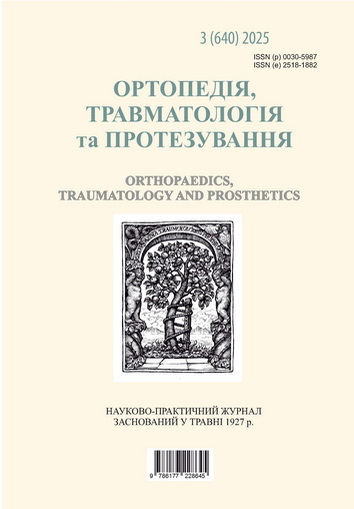RISK FACTORS FOR RECURRENT VERTEBRAL COMPRESSION FRACTURES AFTER PERCUTANEOUS VERTEBROPLASTY IN OSTEOPOROTIC PATIENTS: A SYSTEMATIC REVIEW AND META-ANALYSIS
DOI:
https://doi.org/10.15674/0030-59872025391-102Keywords:
Vertebroplasty, osteoporosis, recurrent compression fractures, meta-analysis, risk factorsAbstract
Recurrent vertebral compression fractures (rVCFs) after percutaneous vertebroplasty (PVP) impair quality of life in osteoporotic patients, yet their risk factors remain debated, necessitating a systematic evaluation. Objective. To synthesize clinical data and quantitatively assess the impact of demographic, morphometric, and technical factors on rVCF incidence postPVP. Methods. A search was conducted in PubMed, Scopus, Medline, and Google Scholar (2010–2024) using MeSH terms: «vertebroplasty», «compression fractures», «osteoporosis», «risk factors», «recurrence». Twenty cohort studies (7,923 patients) were included. Continuous variables were pooled using the Sidik–Jonkman random-effects model (Cohen’s d), and categorical variables using the Paule–Mandel model (odds ratio, OR). Heterogeneity was assessed with I² and prediction intervals; sensitivity analyses were performed. Evidence certainty was evaluated using GRADE. Results. Significant risk factors for rVCFs included absence of anti-osteoporotic therapy (AOT) (OR = 1.97, I² = 40 %), cement leakage (OR = 1.92, I² = 68 %), and low bone mineral density (BMD) (d = –0.55, I² = 72 %), with moderate GRADE certainty. Female sex (OR = 1.30, I² = 39 %) and older age (d = 0.24, I² = 62 %) showed weaker associations with low certainty. Cement volume, body mass index, kyphotic angle, its correction, vertebral height restoration, and thoracolumbar junction involvement were not associated with rVCFs. Conclusions. The most significant rVCF risk factors are absence of AOT, cement leakage, and low BMD, nearly doubling the risk. Female sex increases risk by approximately one-third, and older age has a minor effect. These findings highlight the importance of AOT and technical precision in PVP to prevent rVCFs.
Downloads
How to Cite
Issue
Section
License
Copyright (c) 2025 Andrii Popov, Mykyta Moloduk, Volodymyr Kutsenko, Maryna Nessonova

This work is licensed under a Creative Commons Attribution 4.0 International License.
The authors retain the right of authorship of their manuscript and pass the journal the right of the first publication of this article, which automatically become available from the date of publication under the terms of Creative Commons Attribution License, which allows others to freely distribute the published manuscript with mandatory linking to authors of the original research and the first publication of this one in this journal.
Authors have the right to enter into a separate supplemental agreement on the additional non-exclusive distribution of manuscript in the form in which it was published by the journal (i.e. to put work in electronic storage of an institution or publish as a part of the book) while maintaining the reference to the first publication of the manuscript in this journal.
The editorial policy of the journal allows authors and encourages manuscript accommodation online (i.e. in storage of an institution or on the personal websites) as before submission of the manuscript to the editorial office, and during its editorial processing because it contributes to productive scientific discussion and positively affects the efficiency and dynamics of the published manuscript citation (see The Effect of Open Access).














